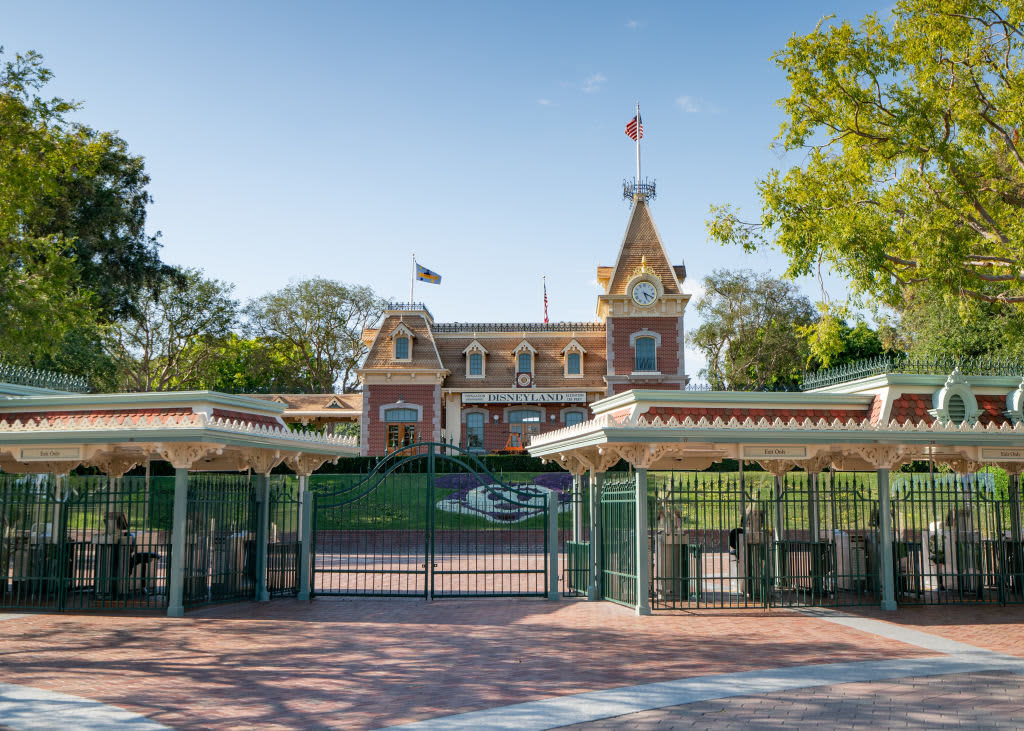
Views of the Disneyland theme park, still closed due to COVID-19 on July 11, 2020 in Anaheim, California.
AaronP/Bauer-Griffin | GC Images | Getty Images
It’s been more than a year since Disney’s two California theme parks were forced to shutter due to the coronavirus pandemic. However, the company’s theme park division hasn’t been standing idly by waiting to reopen.
From refurbishing the iconic carousel to putting the final paintbrush strokes on Avengers Campus, Josh D’Amaro and Disney’s parks, consumer products and experience division has been keeping busy.
As it looks to reopen Disneyland and California Adventure on April 30, the company shared a number of updates with media and stakeholders during a webcast Thursday.
To start, the parks will operate at around 15% capacity, and only be open to California residents. Mask-wearing and social distancing will be required for guests visiting the park.
Last year’s shutdown led Disney to lay off tens of thousands of workers and slashed an important source of revenue for the media company. The parks, experiences and consumer products segment accounted for 37% of the company’s $69.6 billion in total revenue in 2019, or around $26.2 billion.
A year later, revenue shrank to $16.5 billion, or around 25% of the company’s $65.4 billion in total revenue.
“That was probably one of the hardest things I have personally had to do in my career,” D’Amaro said of the layoffs in an interview with CNBC ahead of the webcast. “I’m very passionate about the cast members here. I think they are the real reason that people come to these parks. These small interactions that they have with guests strung together are big and I think that is the reason we are different from the rest of the world.”
D’Amaro said that when the Disneyland Resort opens at the end of April, the company will have called back more than 10,000 cast members.
“We’ve changed a lot of our processes in terms of how people are accessing and experiencing the parks at Walt Disney World and we are doing the same here at Disneyland,” he said.
Guests are encouraged to use cashless pay options, either via the parks’ Magic Bands or through their phones, and to use the parks’ mobile ordering system to purchase food.
“The idea of these things had been around and, in fact, in some cases, it had actually been in existence in our theme parks,” D’Amaro said. “This Covid era that we’ve been through has put that on hyperspeed in terms of adoption and how we are employing it in the parks.”
In fact, before the coronavirus, Disney saw single-digit adoption of its mobile ordering system. Now, around nine out of every 10 guests opt to use it.
Other tech innovations include virtual ride queues, which help maintain social distancing, and an online reservation system, which helps with crowd control. The parks will continue to offer these different technologies even after the pandemic because of how it has helped improve the guest experience at the parks.
“Cashless transactions are faster. Avoiding queues is better,” D’Amaro said. “So we know what this has done is create a better guest experience.”
The park will also continue to implement pop-up cavalcades and impromptu character meet-and-greets, which have replaced large-scale parades and fireworks shows. Even when the parks are able to once again produce massive pyrotechnic shows and processions, these smaller surprise events will remain.
“Particularly, over the last year, the parks group has gotten a lot more nimble in terms of our ability to react to what is hot and relevant,” D’Amaro said.




